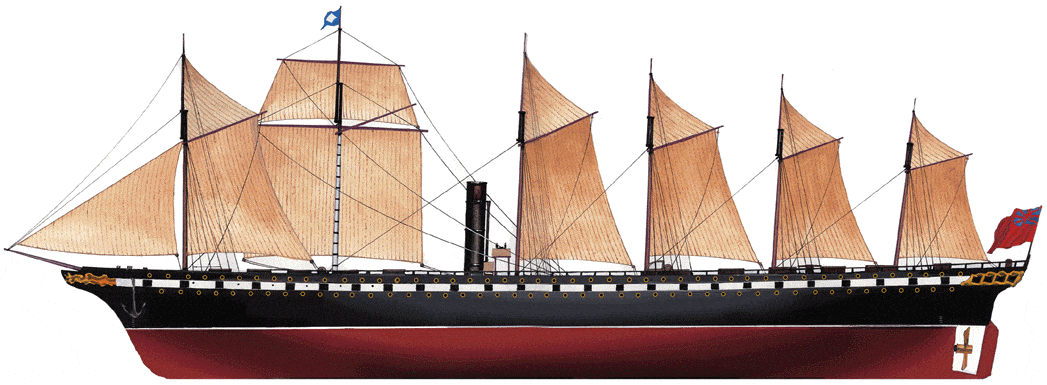
Brunel’s industrial age marvel
SS Great Britain was one of the most famous ships in history. It was the first all-iron large oceanic liner, although not truly the first screw steamer: The “prototype” was indeed the little HMS Archimedes, developed around the idea of the original screw of archimedes. It was launched in 1838 and in 1840 had already carried out some cruises, proving the concept. Star engineer Isambard K. Brunel, designer of the Great Western Railway, was convinced by Richard Guppy, who had borrowed this ship, to equip his proposed Great Britain with a propeller instead of paddles.
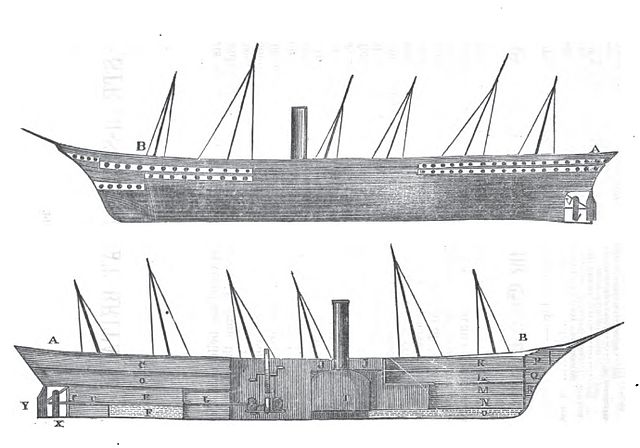
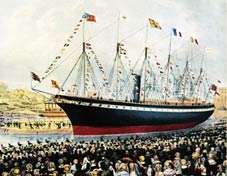
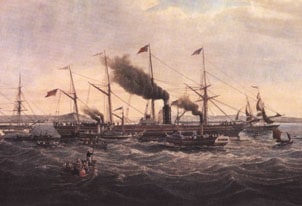
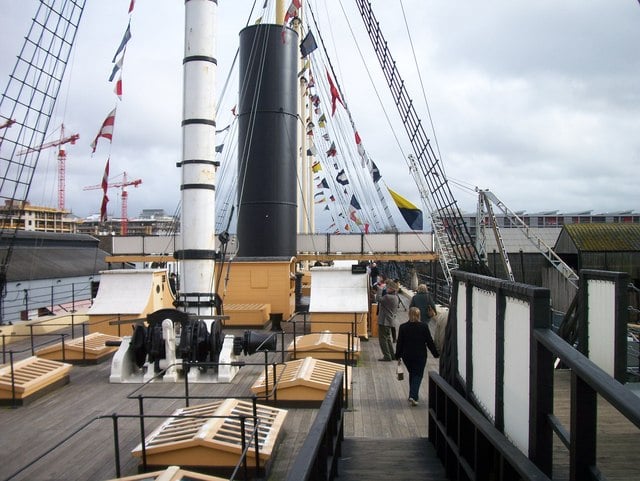
Brunel bought the Archimedes in order to experiment it, then opted for this revolutionary mode of propulsion for his great steamer. Brunel wanted the Great Britain to be the best ship of the kind ever built, and size was also a solution to reduce the ship’s rolling, improve passengers comfort. With 98 meters and 3500 tons she became indeed also the biggest ship afloat at its launch. She was chartered by the company created by Brunel in 1836 and was already operating the for Great Western Ship Co. Finished and armed in London, she was ready in 1845 for here inaugural cruise to New York. The round trip took 14 and 15 days, which was relatively slow.
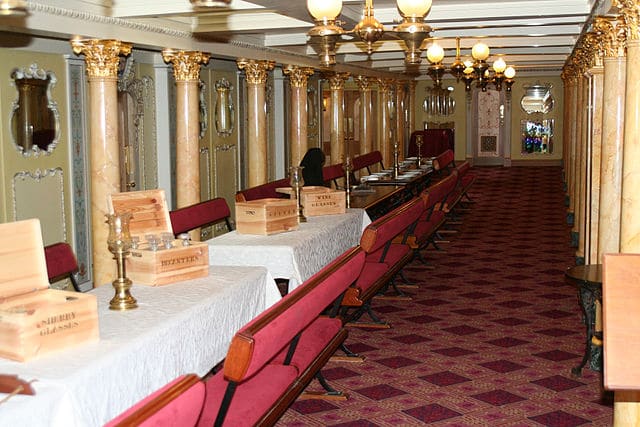
1st class dining room
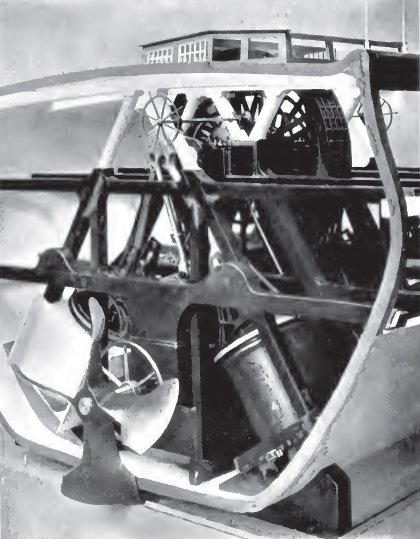
Model of the steam engines
Service
On her return, she broke her propeller and finished under sails. This unfortunate accident stopped her, but the great ship was back in 1846. On the night of 22-23 September she ran aground in Dundrum Bay between Belfast and Dundalk, and remained prisoner of tide, where Many curious came to see her laying like a dead whale (a painting was made of the event). This new incident paralyzed her for a long time and ruined the Great Western Ship Co.
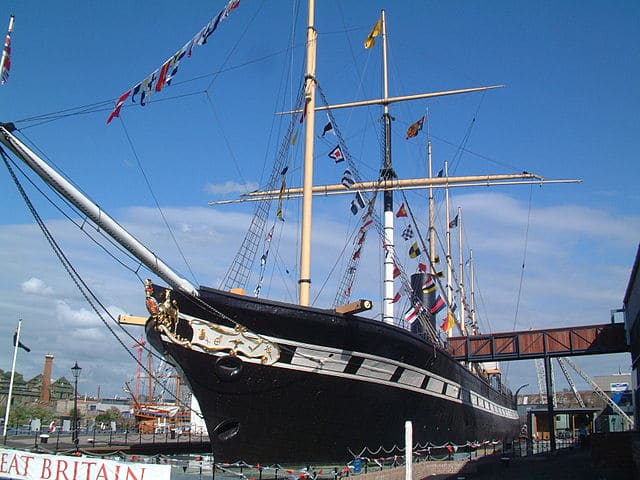
She was finally towed to Liverpool and resold in 1850 to Gibbs, Bright & amp; Co. which made profound changes: New screw, new machines, less powerful, with two chimneys, sail surface reduced to four masts, but taller, so much so that the advertising brochure of the time which praised its merits, spoke of a “Steam clipper”. After her inaugural trip to Australia, she made 32 trips to this continent before returning to the prestigious Atlantic line.
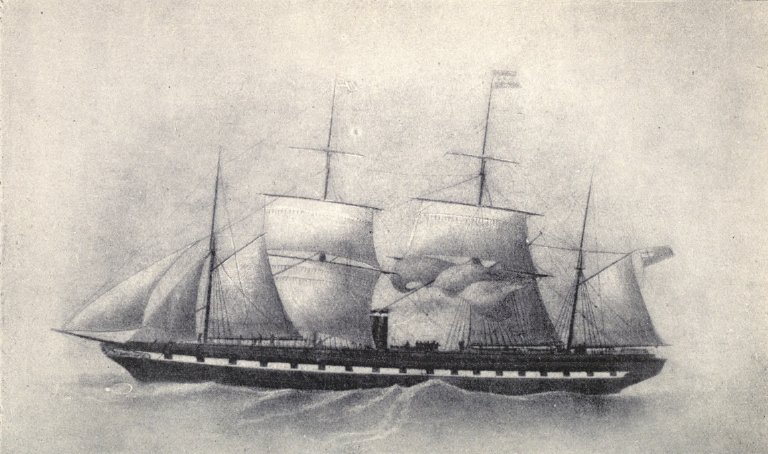
In 1882, she was bought by A. Gibbs and modified again. Machines were removed, rig was reduced to three masts and she became a pure sailboat. A storm hit her at Cape Horn and she had to take refuge in the Falklands, waiting to find a new buyer. Finally, she was stripped of her masts and served locally for long as a coal depot.
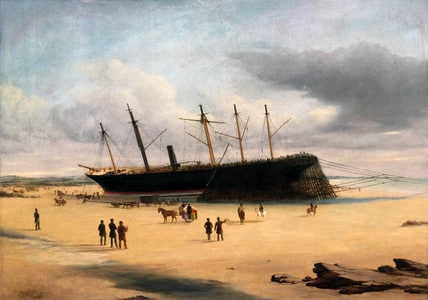
Stranded at Dundrum Bay
But her career did not stopped there: In 1933, after having been used to stock also bales of wool from Argentina, the former big steamer was no more than an anonymous, rusty hull. Left over to rot, one of its moorings dropped in 1937 and the unfortunate ship was dropped on the coast, at Sparrow Cove. She was recognized, raised and eventually carried by a barge in 1970, and then transported back to Bristol. After intense repairs and reconstruction efforts, SS Great Britain is now currently showcased to the public, in very the same dockyard where where she was built.
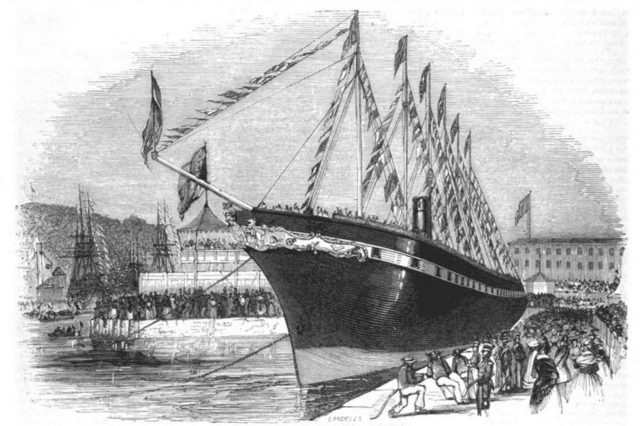
Launch at Bristol, 1843
Caracteristics :
- Displacement: 3500 tonnes
- Dimensions: 98 x 15,2 x 6,5 m (PP length, width, waterline).
- Propulsion 1 screw, one 4-cylinders, 500 hp.
- Speed 10 knots.


 Latest Facebook Entry -
Latest Facebook Entry -  X(Tweeter) Naval Encyclopedia's deck archive
X(Tweeter) Naval Encyclopedia's deck archive Instagram (@navalencyc)
Instagram (@navalencyc)





 Austrian Navy
Austrian Navy French Navy
French Navy Royal Navy
Royal Navy Armada Espanola
Armada Espanola K.u.K. Kriegsmarine
K.u.K. Kriegsmarine Dansk Marine
Dansk Marine Nautiko Hellenon
Nautiko Hellenon Koninklije Marine 1870
Koninklije Marine 1870 Marinha do Brasil
Marinha do Brasil Osmanlı Donanması
Osmanlı Donanması Marina Do Peru
Marina Do Peru Marinha do Portugal
Marinha do Portugal Regia Marina 1870
Regia Marina 1870 Nihhon Kaigun 1870
Nihhon Kaigun 1870 Preußische Marine 1870
Preußische Marine 1870 Russkiy Flot 1870
Russkiy Flot 1870 Svenska marinen
Svenska marinen Søværnet
Søværnet Union Navy
Union Navy Confederate Navy
Confederate Navy Armada de Argentina
Armada de Argentina Imperial Chinese Navy
Imperial Chinese Navy Marinha do Portugal
Marinha do Portugal Mexico
Mexico Kaiserliche Marine
Kaiserliche Marine 1898 US Navy
1898 US Navy Russkiy Flot
Russkiy Flot French Naval Aviation
French Naval Aviation Russian Naval Aviation
Russian Naval Aviation Sovietskiy Flot
Sovietskiy Flot Royal Canadian Navy
Royal Canadian Navy Royal Australian Navy
Royal Australian Navy RNZN Fleet
RNZN Fleet Chinese Navy 1937
Chinese Navy 1937 Kriegsmarine
Kriegsmarine Chilean Navy
Chilean Navy Danish Navy
Danish Navy Finnish Navy
Finnish Navy Hellenic Navy
Hellenic Navy Polish Navy
Polish Navy Romanian Navy
Romanian Navy Turkish Navy
Turkish Navy Royal Yugoslav Navy
Royal Yugoslav Navy Royal Thai Navy
Royal Thai Navy Minor Navies
Minor Navies Albania
Albania Austria
Austria Belgium
Belgium Columbia
Columbia Costa Rica
Costa Rica Cuba
Cuba Czechoslovakia
Czechoslovakia Dominican Republic
Dominican Republic Haiti
Haiti Hungary
Hungary Honduras
Honduras Estonia
Estonia Iceland
Iceland Eire
Eire Equador
Equador Iran
Iran Iraq
Iraq Latvia
Latvia Liberia
Liberia Lithuania
Lithuania Mandchukuo
Mandchukuo Morocco
Morocco Nicaragua
Nicaragua Persia
Persia San Salvador
San Salvador Sarawak
Sarawak Uruguay
Uruguay Venezuela
Venezuela Zanzibar
Zanzibar Warsaw Pact Navies
Warsaw Pact Navies Bulgaria
Bulgaria Hungary
Hungary

 Bundesmarine
Bundesmarine Dutch Navy
Dutch Navy Hellenic Navy
Hellenic Navy Marina Militare
Marina Militare Taiwanese Navy
Taiwanese Navy Chinese Navy
Chinese Navy Indian Navy
Indian Navy Indonesian Navy
Indonesian Navy JMSDF
JMSDF North Korean Navy
North Korean Navy Philippines Navy
Philippines Navy ROKN
ROKN IDF Navy
IDF Navy Royal New Zealand Navy
Royal New Zealand Navy Egyptian Navy
Egyptian Navy South African Navy
South African Navy

































 RN
RN
 Marine Nationale
Marine Nationale
 Soviet Navy
Soviet Navy
 dbodesign
dbodesign